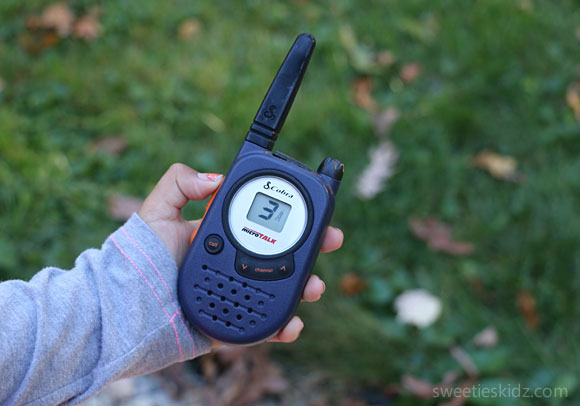
With the summer holidays impending, children will be playing outdoors for longer and many families will be taking day trips and holidays. For parents, this can be a daunting time as it can be tricky to ensure your children’s safety while allowing them some freedom and independence.
One of the ways parents can keep their children safe while they are out and about is with a set of two-way radios, or walkie talkies. If you’re not ready for your child to have a mobile phone or are visiting an area where coverage is limited, a walkie talkie is a great way of keeping in contact with your children or vice versa. Plus, they can be really fun for children too.
In this blog post, we will take a look at how you can keep your children safe with a walkie talkie and what you should be looking out for when buying them.
Using a walkie talkie
Before you consider buying a set of two-way radios, you should consider the scenarios in which you might use them, as this can influence which product you opt for. Some examples of scenarios where walkie talkies might be useful include:
Camping and other outdoor trips
With many campsites and outdoor activities situated in the countryside, mobile phone coverage can be poor. Using walkie talkies allows your children to roam around while keeping in touch with family members.
Theme parks and festivals
Due to the number of people visiting these attractions, children may get separated from the group in a crowd. Giving your child a walkie talkie to carry on them while you keep the other one can mean they are able to get in touch should they run into trouble.
Playing out or running errands
It can often be nerve-racking to allow your children out on their own for the first time, whether they’re going to play out with friends or heading to the shop, but giving them a walkie talkie can give you peace of mind as you will be able to keep in touch.
Buying a walkie talkie
Despite the simplicity of walkie talkies, it can be difficult to decide what features you need. Here, we will make the buying process easier by explaining the pros and cons of two-way radio features:
Batteries or Rechargeable
Many lower-priced walkie talkies will use batteries, while the high-end models will have rechargeable batteries with a charging station or cable. While being able to replace batteries means you don’t have to worry about finding a power source, it can be quite expensive to replace the batteries for two or more devices. If you opt for rechargeable walkie talkies, you need to make sure you plan ahead by leaving enough time to ensure they are fully charged.
Number of channels
To minimise the risk of having a frequency hijacked by other people, or you connecting to a channel you shouldn’t be on, e.g. a security or emergency services channel, we advise opting for walkie talkies that can pick up multiple frequencies.
Some walkie talkies have privacy codes in addition to different channels - although it is important to remember that these are not completely secure. You should ensure your children know what to do should a stranger be eavesdropping or trying to communicate with them.
Optimum range
Many walkie talkies are advertised with a satisfactory range that then fails to perform. Make sure to check that your choice of two-way radio matches your requirements - if it isn’t clear or you’re unsure, do not be afraid to ask for assistance from a member of staff.
Simplicity
Although many kids nowadays are incredibly tech savvy, be sure to choose a device that has a simple interface so they can be used in case there is an emergency.
Voice activated
Older versions of walkie talkies require a button to be pressed before communicating, while modern devices support Voice Operated Exchange (VOX). This means the radio will activate handsfree when it detects sounds over a certain level.
Weight
Considering the weight of a walkie talkie is an important buying factor as small children may struggle to keep a device with them if it is too heavy.
Resilience
Children’s play and outdoor activities are often physical so it’s important that a walkie talkie can handle the rigours of this as well as the elements.
Colour
The colour of a walkie talkie is usually not just for aesthetics as a brightly-coloured device is much more easier to find (and less likely to be left behind) than a dark-coloured or camouflage-designed one.
Licensing
The regulations of two-way radios vary from country to country, for instance, a licence is required in the UK, so be sure to check that they can used if you’re visiting another country. Don’t be tempted to import a cheaper model from the US, as some devices will not be legal in the UK. Again, if you are unsure, speak to an expert.



